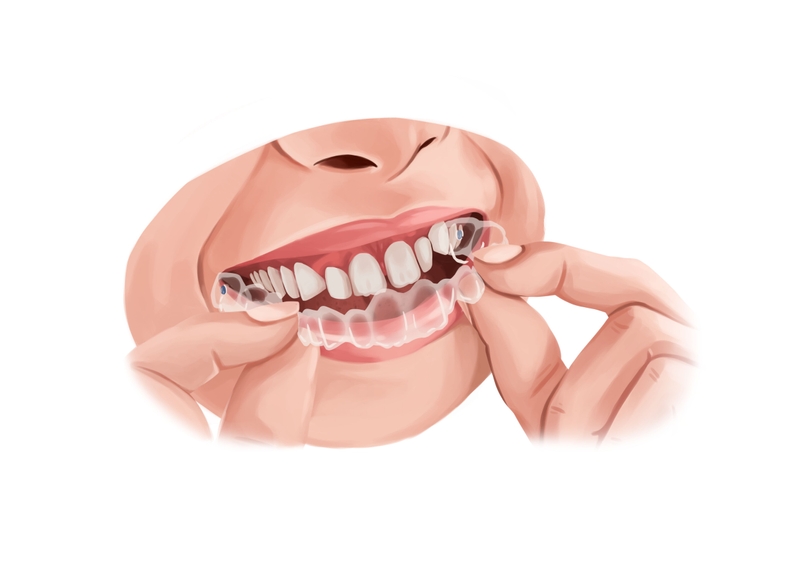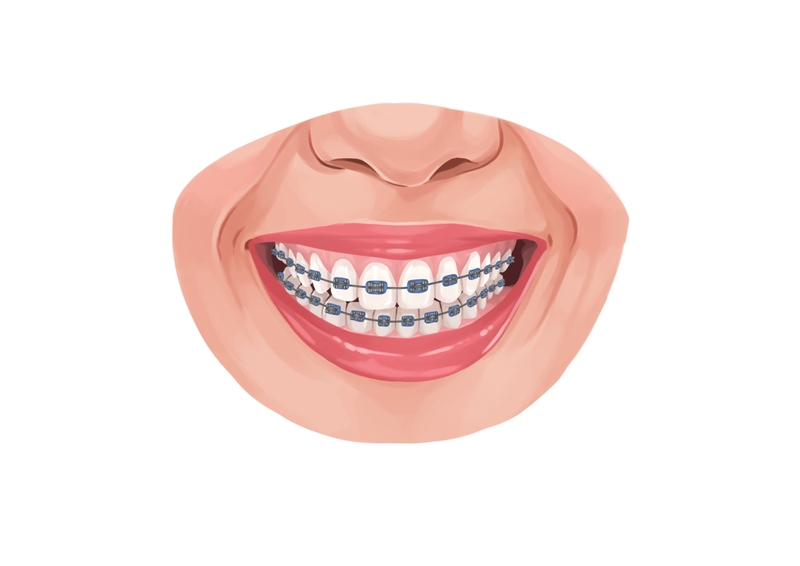- A diastema is a gap between the two central incisors of the upper jaw. It can occur naturally or result from oral habits.
- Diastemas are more common in young children. About 13.6% of young adults still have a diastema after all permanent teeth have erupted.
- Braces, dental bonding, veneers or crowns, and surgical treatments can help close gaps between teeth.
How does diastema affect your oral health? Here's everything you need to know.
Diastema definition

Picture by Authority Dental under CC 2.0 license
A diastema is a gap between the two maxillary central incisors that is the result of the differences in the size of the teeth and jaw. It can occur naturally due to the growth and development of the teeth, jaw, and oral tissues, or it can be caused by oral habits. A diastema between the two maxillary central incisors is also referred to as a midline diastema.
Diastemas are common in young children as there must be enough space between the primary teeth for the permanent ones to develop. As they age and their dentition changes, the diastema and other gaps begin to close. While diastemas are certainly not uncommon, only about 13.6% of young adults still have a diastema after their permanent teeth have all erupted.
Causes of diastema
As we mentioned, diastemas can occur naturally during the development of the dentition, jaw, and tissues, or they can occur because of oral habits like thumb sucking and repeated biting of the lower lip. The most common causes for a midline diastema include:
abnormal maxillary arch growth,
enlarged or low frenum,
thumb sucking,
lower lip biting,
periodontal disease,
oral muscular imbalances,
abnormal swallowing.
Gap teeth treatment options

Picture by Authority Dental under CC 2.0 license
There are several options available to close tooth gaps. Individuals will need to consult with their dentist or orthodontist to discuss which ones they are a candidate for and the pros and cons of each. There will also be financial differences to take into consideration.
Braces
Braces are the most common way to fix any gaps in teeth, including midline diastemas. An orthodontist will place metal or acrylic brackets on each tooth involved in the treatment. A series of wires and bands will be used to correctly align the teeth. After treatment has been completed, individuals will need to wear some type of retention device, usually a retainer.
Dental bonding
Dental bonding involves placing composite resin on the teeth to fill in the gaps. The composite is placed on both teeth and then shaped to give the teeth proper symmetry. In cases of wide diastemas, this may cause the teeth to look too large. Wax-ups can be made prior to treatment so that the individual can see what the teeth will look like after bonding.
Bonding is the most cost-effective way to close a diastema, but the composite can break and will likely need to be replaced multiple times over the years.
Veneers or crowns
Veneers or crowns can also be used to close diastemas without having to go through orthodontic treatment. They are a more permanent solution than bonding. Veneers will cover just the facial (front) surface of the teeth, and crowns will cover the tooth entirely. As with dental bonding, wax-ups can be fabricated prior to treatment to ensure the satisfaction of the individual.
The downside to using these to treat the diastema is that tooth structure must be removed to place the restoration.
Surgical treatment
Surgical treatment may be needed to either prevent a diastema or treat an existing diastema. Typically, that surgical treatment involves a frenectomy. A frenectomy is performed to remove an enlarged or “abnormal” frenum attachment. A frenum is a thin piece of tissue that connects the lips to the gums. In some cases, the frenum can cause too much pressure on the teeth, resulting in tooth gaps.
Gum disease treatment
If a diastema is caused by periodontal disease, the disease must be treated. Gum disease causes bone and tissue loss, which can result in the movement of teeth and even tooth loss if left untreated. It is caused by the build-up of bacteria under the gum tissue due to poor oral hygiene.
It is treated by performing scaling and root planing, which is done at either a general dentist’s office or a periodontist. The clinician will administer anesthetic to the area and then will use instruments to reach below the gum tissue and clean the root surfaces of the teeth.
FAQ
Is it possible to prevent diastema?
Is having a gap in your teeth bad?
A diastema doesn’t always have to be treated. Gaps anywhere in your mouth could contribute to plaque build-up and bacterial growth. They could also cause issues with biting, chewing and swallowing.
However, sometimes a diastema is simply an esthetic concern and doesn’t necessarily require treatment. Consult with your dentist to find out if your diastema is causing harm to your oral health.
Do gaps in teeth get bigger with age?
Can you fix diastema without dentist intervention?
Teeth bands are a method used to close a diastema that can be tried at home. The bands are placed around two teeth and left on overnight. The bands are removed in the morning and then replaced at night. This is repeated until the gap has closed, which typically takes 30-60 days, depending on the size of the diastema.
Any treatment that affects your teeth should be monitored by a dentist. Before pursuing this method at home, you should discuss it with your dentist and make sure there are no underlying conditions that could damage your teeth during treatment.
What is the average cost of teeth gap filling?
What famous people have diastema?